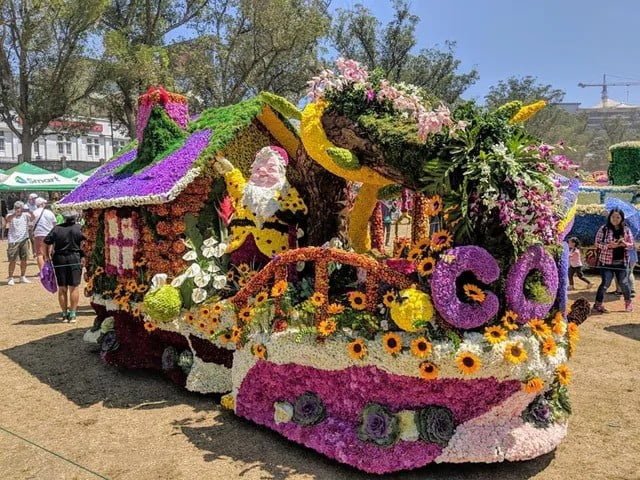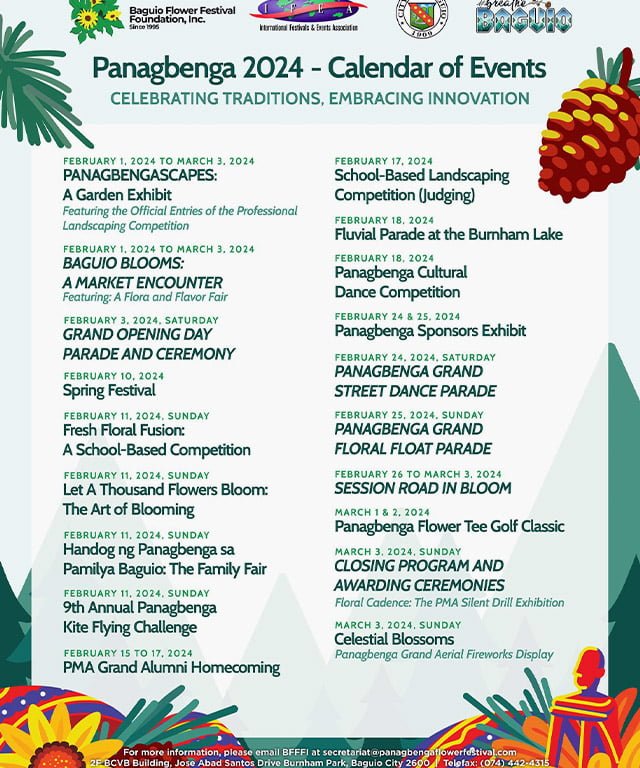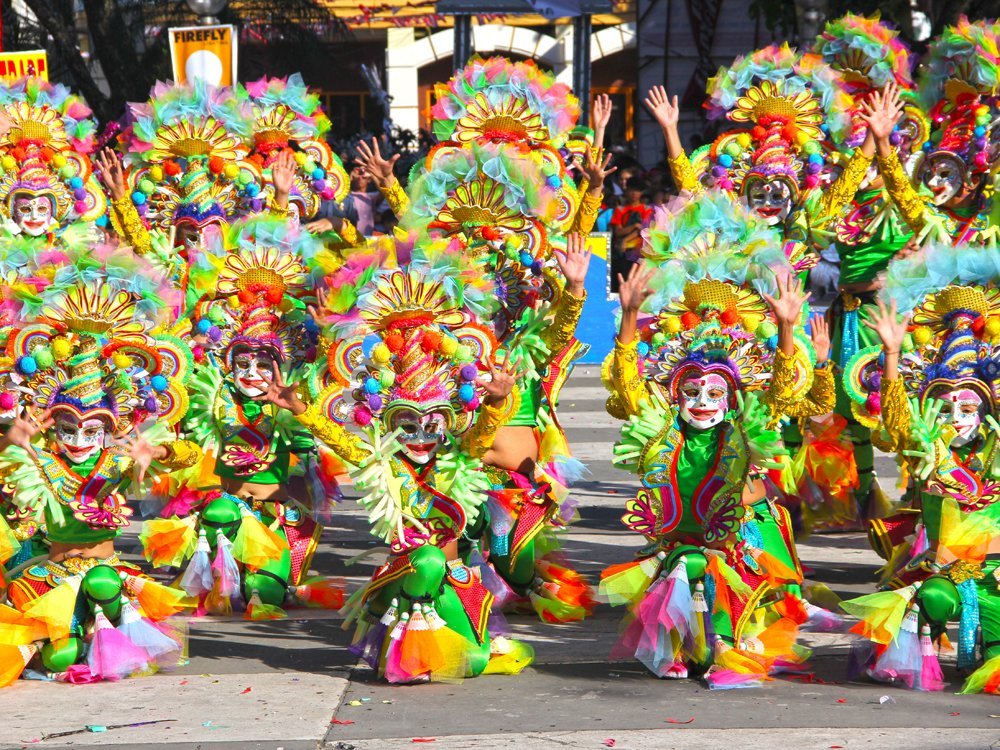The Panagbenga Festival, also known as the Baguio Flower Festival, is a grand celebration of culture and nature held annually in Baguio City, Philippines. The festival showcases the city’s beautiful flowers and rich cultural heritage through a series of events and activities that attract locals and tourists alike.
The festival’s history dates back to 1995 when it was first organized to boost tourism and showcase the city’s unique culture and traditions. Since then, the festival has grown in popularity and has become one of the country’s most anticipated events.
The Panagbenga Festival is a significant celebration for the people of Baguio City as it symbolizes the city’s resilience and strength in the face of adversity. Despite the challenges brought about by natural disasters and economic downturns, the festival continues to bring joy and hope to the people of Baguio and its visitors.
Key Takeaways
- The Panagbenga Festival is an annual celebration of culture and nature held in Baguio City, Philippines.
- The festival’s history dates back to 1995 and has since become one of the country’s most anticipated events.
- The festival symbolizes the city’s resilience and strength in the face of adversity.
History of Panagbenga Festival

Panagbenga Festival is an annual event that takes place in Baguio City, Philippines. The festival is also known as the “Baguio Flower Festival” and is celebrated every February. The festival began in 1995 and has since become one of the most popular festivals in the Philippines.
The word “Panagbenga” is a Kankanaey term which means “a season of blooming.” The festival is a celebration of the city’s beautiful flowers and the bountiful harvest. The first Panagbenga Festival was organized as a way to boost tourism in the city after the devastating earthquake in 1990.
The festival features a parade of floats adorned with flowers, street dancing, and other cultural presentations. The main highlight of the festival is the Grand Street Parade, which showcases the colorful and vibrant culture of Baguio City. The parade is participated by local and international groups, showcasing their creativity and talents.
Over the years, Panagbenga Festival has become more than just a celebration of flowers and harvest. It has become a symbol of the city’s resilience and determination to rise above challenges. The festival has also become a platform for promoting the city’s tourism and culture, as well as a way to showcase the creativity and talents of the people of Baguio City.
Overall, the Panagbenga Festival is a celebration of life, beauty, and culture. It is a testament to the city’s vibrant and colorful history, as well as its bright and promising future.
Significance and Celebration
The Panagbenga Festival is a well-known celebration in the Philippines that takes place every February in Baguio City. The festival is a month-long celebration that features a series of events, including street dancing, parades, and flower exhibitions. The festival has become a significant event in the Philippines, attracting both locals and tourists from around the world.
Reasons for Celebration
The Panagbenga Festival is celebrated for several reasons. One of the primary reasons is to celebrate the blooming of flowers in Baguio City. The festival is a tribute to the city’s agricultural heritage and its reputation as the “City of Flowers.” During the festival, the streets of Baguio City come alive with vibrant colors and the sweet aroma of flowers.
Another reason for the celebration is to promote tourism in the region. The festival attracts thousands of tourists every year, which helps boost the local economy. The festival also serves as an opportunity for local businesses to showcase their products and services to a wider audience.
The festival is also a celebration of the rich culture and traditions of the people of Baguio City. The street dancing and parades are a showcase of the city’s cultural diversity and its unique blend of indigenous and modern influences. The festival is a time for the people of Baguio City to come together and celebrate their shared heritage.
In conclusion, the Panagbenga Festival is a significant celebration in the Philippines that celebrates the blooming of flowers, promotes tourism, and showcases the rich culture and traditions of Baguio City. The festival is a testament to the resilience and creativity of the Filipino people and their ability to come together in times of celebration.
Panagbenga Festival 2024 Schedule
The Panagbenga Festival is a highly anticipated event in the Philippines, attracting both locals and tourists from all over the world. The festival is held annually in Baguio City, and the 2024 festival promises to be bigger and better than ever before. Here is a breakdown of the 2024 festival schedule:
- February 1 to March 3: Panagbengascapes: A garden exhibit showcasing the official entries of the Professional Landscaping Competition
- February 1 to March 3: Baguio Blooms: A market encounter featuring a flora and flavor fair
- February 3: Grand Opening Day Parade and Ceremony
- February 10: Spring Festival
- February 11: 9th Annual Panagbenga Kite Flying Challenge
- February 18: Fluvial Parade at Burnham Lake
- February 18: Panagbenga Cultural Dance Competition
- February 24: Panagbenga Grand Street Dance Parade
- February 25: Panagbenga Grand Floral Float Parade
- February 26 to March 3: Session Road in Bloom
- March 3: Closing Program and Awarding Ceremonies
- March 3: Celestial Blossoms: Panagbenga Grand Aerial Fireworks Display

Overall, the 2024 Panagbenga Festival promises to be an exciting and unforgettable experience for everyone who attends. With a jam-packed schedule of events and activities, visitors are sure to have a great time and create lasting memories.
Cultural Activities
The Panagbenga Festival is a celebration of Baguio City’s rich culture and tradition. The festival features various cultural activities that showcase the city’s unique heritage and customs. Among the most popular cultural activities of the festival are the parades and street dancing, as well as the floral exhibitions.
Parades and Street Dancing
The Panagbenga Festival is famous for its colorful and lively parades and street dancing. The parade features different floats adorned with flowers and other decorative materials. The street dancing, on the other hand, showcases the traditional dances of the Cordillera region. The participants wear colorful costumes and perform intricate dance routines that reflect the region’s rich culture and tradition.
Floral Exhibitions
Another highlight of the Panagbenga Festival is the floral exhibitions. The festival features various exhibits that showcase different types of flowers and plants. The exhibits are creatively designed and arranged, and they feature a wide variety of flowers, from the traditional roses and daisies to the exotic orchids and anthuriums. Visitors can also buy flowers and other ornamental plants from the festival’s flower market.
Overall, the cultural activities of the Panagbenga Festival offer a unique and exciting experience for both locals and tourists. The festival’s parades and street dancing and floral exhibitions provide a glimpse into the rich culture and tradition of Baguio City and the Cordillera region.
Traditional Attire
Panagbenga Festival is a celebration of the blooming season in Baguio City, Philippines. One of the highlights of the festival is the traditional attire worn by the participants. Both male and female costumes showcase the rich culture and heritage of the Cordilleran people.
Male Costume
The male costume is composed of a bahag, a traditional loincloth made of woven fabric. It is usually adorned with intricate beadwork and embroidery, reflecting the artistic skills of the Cordilleran people. The bahag is paired with a long-sleeved shirt, often made of cotton or linen, and a vest. The vest is also decorated with beadwork and embroidery, and is usually worn over the shirt.
To complete the male costume, participants wear a headband made of beads or feathers, and carry a shield and spear. The shield is often made of wood or animal hide, and is decorated with intricate designs.
Female Costume
The female costume is more elaborate than the male costume, and is composed of several layers. The first layer is a skirt made of woven fabric, usually adorned with intricate beadwork and embroidery. The skirt is paired with a blouse, also made of woven fabric, and decorated with beadwork and embroidery.
Over the blouse, participants wear a shawl or wrap made of woven fabric, often decorated with intricate designs. To complete the female costume, participants wear a headband made of beads or feathers, and carry a basket or a fan.
Overall, the traditional attire worn during the Panagbenga Festival showcases the artistic skills and cultural heritage of the Cordilleran people. The intricate designs and vibrant colors of the costumes add to the festive atmosphere of the celebration.
Frequently Asked Questions
What is the historical background of the Panagbenga Festival?
The Panagbenga Festival, also known as the Baguio Flower Festival, was first held in 1995 to celebrate the city’s resilience after the devastating earthquake that struck the region. The festival was also created to showcase the city’s blooming flowers, which are a major source of income for the region.
What are the main events and activities during the Panagbenga Festival?
The Panagbenga Festival features a variety of events and activities, including a grand street parade, a floral float parade, a market encounter, a concert series, and a fireworks display. These events attract thousands of visitors from all over the world.
How does the Panagbenga Festival contribute to the culture and economy of Baguio?
The Panagbenga Festival has become a major cultural event in the Philippines, attracting both locals and tourists alike. It has also become an important source of income for the city, as the influx of visitors during the festival generates revenue for local businesses and the tourism industry.
What traditional costumes are typically worn during the Panagbenga Festival celebrations?
During the Panagbenga Festival, participants wear colorful costumes inspired by traditional Igorot attire. These costumes are adorned with intricate beadwork and embroidery, and are often accompanied by headdresses made of feathers and flowers.
Can you describe the significance of flowers in the Panagbenga Festival?
Flowers play a significant role in the Panagbenga Festival, as they symbolize the city’s blooming beauty and resilience. They are also a major source of income for the region, as Baguio is known for its vast flower farms and nurseries.
When is the Panagbenga Festival scheduled to take place in 2024?
The Panagbenga Festival is scheduled to take place from February 1 to March 10, 2024, in Baguio City, Philippines.



Pingback: Tawi-Tawi Tourist Hotspots: Top Attractions You Really Need to Visit
Pingback: Moriones Festival: A Colorful and Religious Celebration in the Philippines - Roam Leisurely
Pingback: Discover the Timeless Charm of Calle Crisologo
Pingback: 11 Best Tourist Spots in Cagayan de Oro You Can't Miss